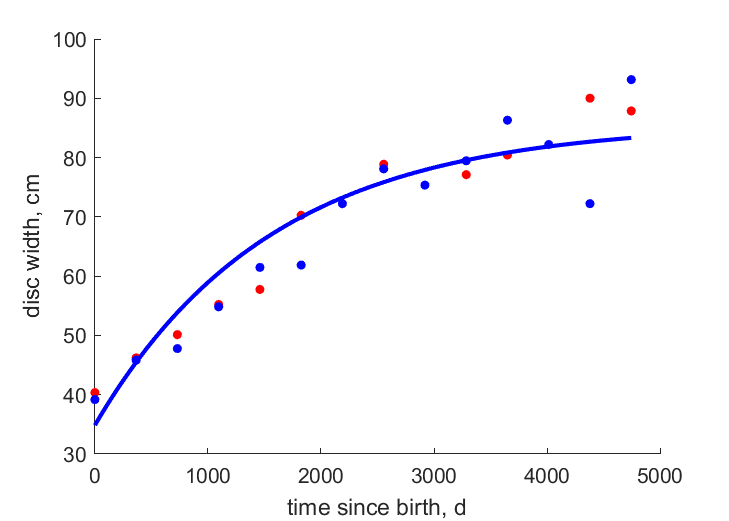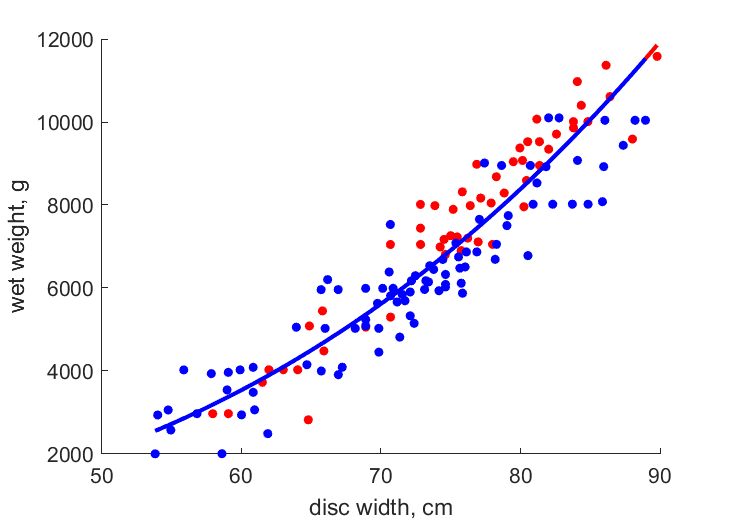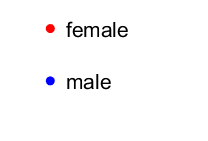Predictions & Data for this entry
| Model: std | climate: MA, MB | migrate: | phylum: |
| COMPLETE = 2.5 | ecozone: MPE | food: biCi | class: |
| MRE = 0.057 | habitat: 0iMpe | gender: D | order: |
| SMSE = 0.005 | embryo: Mv | reprod: O | family: |
Zero-variate data
| Data | Observed | Predicted | (RE) | Unit | Description | Reference |
|---|---|---|---|---|---|---|
| ab | 366 | 389.6 | (0.06448) | d | age at birth | BizzSmit2007 |
| am | 9490 | 9547 | (0.006019) | d | life span | Neer2005 |
| Lb | 40 | 34.85 | (0.1287) | cm | disc width at birth | Coli2016 |
| Lp | 70 | 69.28 | (0.01023) | cm | disc width at puberty | BizzSmit2007 |
| Li | 90 | 91.82 | (0.0202) | cm | ultimate disc width | fishbase |
| Ri | 0.00274 | 0.002732 | (0.00272) | #/d | maximum reprod rate | fishbase |
Uni- and bivariate data
| Data | Figure | Independent variable | Dependent variable | (RE) | Reference |
|---|---|---|---|---|---|
| tL_f |   | time since birth | disc width | (0.05114) | Coli2016 |
| tL_m |   | time since birth | disc width | (0.06408) | Coli2016 |
| LWw_f |   | disc width | wet weight | (0.07875) | BizzSmit2007 |
| LWw_m |   | disc width | wet weight | (0.1117) | BizzSmit2007 |
Pseudo-data at Tref = 20°C
| Data | Generalised animal | Rhinoptera steindachneri | Unit | Description |
|---|---|---|---|---|
| v | 0.02 | 0.04331 | cm/d | energy conductance |
| kap | 0.8 | 0.822 | - | allocation fraction to soma |
| kap_R | 0.95 | 0.95 | - | reproduction efficiency |
| p_M | 18 | 13.57 | J/d.cm^3 | vol-spec som maint |
| k_J | 0.002 | 0.002 | 1/d | maturity maint rate coefficient |
| kap_G | 0.8 | 0.7971 | - | growth efficiency |
Discussion
- The cost for milk secretion is added to the investment from the reproduction buffer.
- Males are supposed not to differ from females
Facts
- At first, they are enclosed in an egg case while the developing embryos feed on the yolk. After the egg hatches, the pup remains in the oviduct and receives nourishment from a milky secretion (Ref: fishbase)
Bibliography